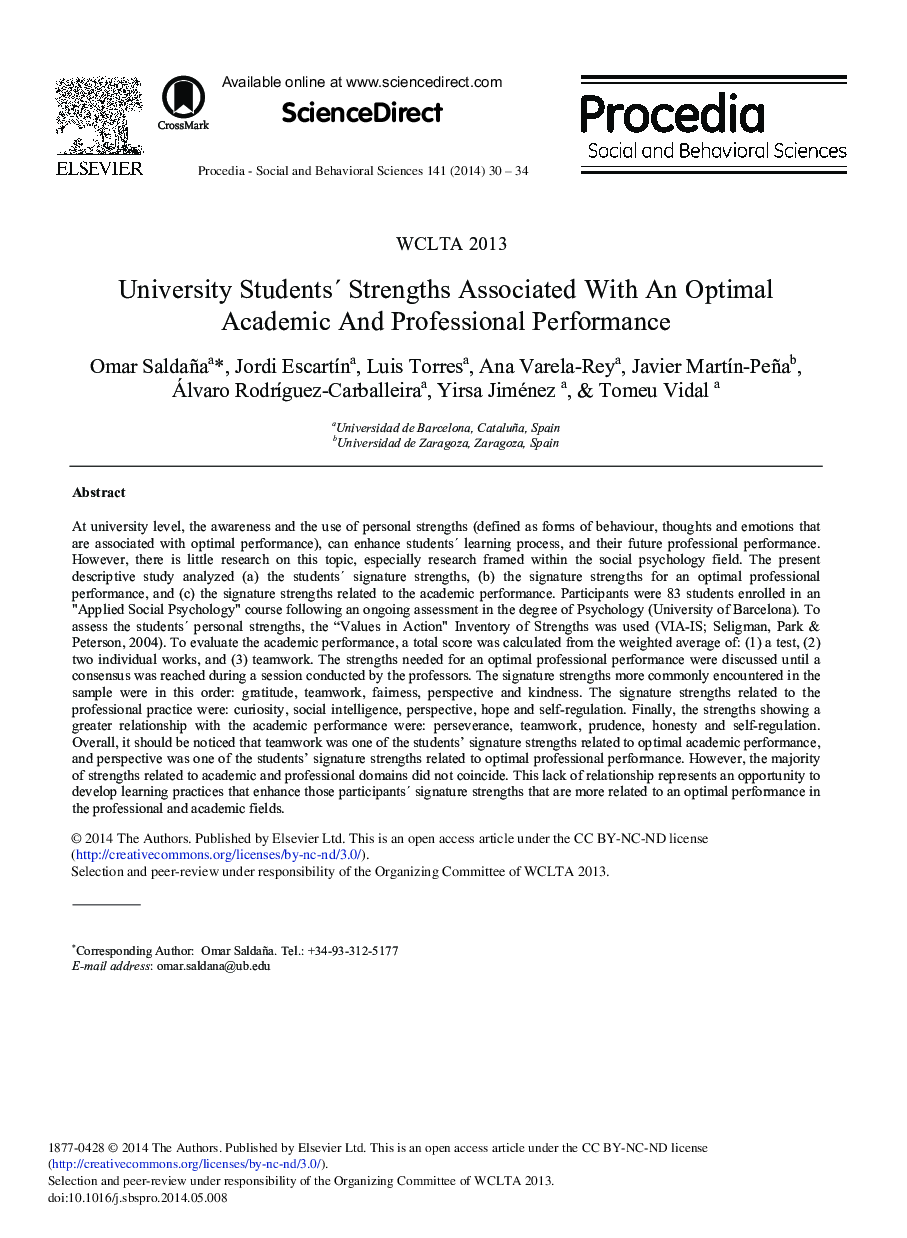| Article ID | Journal | Published Year | Pages | File Type |
|---|---|---|---|---|
| 1113203 | Procedia - Social and Behavioral Sciences | 2014 | 5 Pages |
At university level, the awareness and the use of personal strengths (defined as forms of behaviour, thoughts and emotions that are associated with optimal performance), can enhance studentś learning process, and their future professional performance. However, there is little research on this topic, especially research framed within the social psychology field. The present descriptive study analyzed (a) the studentś signature strengths, (b) the signature strengths for an optimal professional performance, and (c) the signature strengths related to the academic performance. Participants were 83 students enrolled in an “Applied Social Psychology” course following an ongoing assessment in the degree of Psychology (University of Barcelona). To assess the studentś personal strengths, the “Values in Action” Inventory of Strengths was used (VIA-IS; Seligman, Park & Peterson, 2004). To evaluate the academic performance, a total score was calculated from the weighted average of: (1) a test, (2) two individual works, and (3) teamwork. The strengths needed for an optimal professional performance were discussed until a consensus was reached during a session conducted by the professors. The signature strengths more commonly encountered in the sample were in this order: gratitude, teamwork, fairness, perspective and kindness. The signature strengths related to the professional practice were: curiosity, social intelligence, perspective, hope and self-regulation. Finally, the strengths showing a greater relationship with the academic performance were: perseverance, teamwork, prudence, honesty and self-regulation. Overall, it should be noticed that teamwork was one of the students’ signature strengths related to optimal academic performance, and perspective was one of the students’ signature strengths related to optimal professional performance. However, the majority of strengths related to academic and professional domains did not coincide. This lack of relationship represents an opportunity to develop learning practices that enhance those participantś signature strengths that are more related to an optimal performance in the professional and academic fields.
